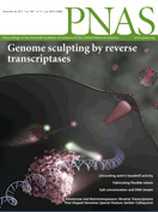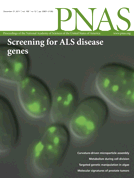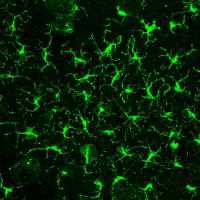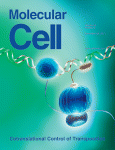PNAS:c-Myc-SIRT1通道是癌细胞无限分裂的分子机制
2012-01-06 MedSci原创 MedSci原创
近日,国际著名杂志PNAS刊登了德国慕尼黑大学等机构的研究人员的最新研究成果“The c-MYC oncoprotein, the NAMPT enzyme, the SIRT1-inhibitor DBC1, and the SIRT1 deacetylase form a positive feedback loop。”,文章中,研究人员揭示了癌细胞无限分裂的一种分子机制。 癌细胞最显著
近日,国际著名杂志PNAS刊登了德国慕尼黑大学等机构的研究人员的最新研究成果“The c-MYC oncoprotein, the NAMPT enzyme, the SIRT1-inhibitor DBC1, and the SIRT1 deacetylase form a positive feedback loop。”,文章中,研究人员揭示了癌细胞无限分裂的一种分子机制。
癌细胞最显著的特征就是无限分裂、永不停止,而正常细胞则不会无限生长。什么原因导致癌细胞的“疯狂”?德国研究人员最新发现,一种核蛋白和一种酶会在癌细胞中“狼狈为奸”,形成反馈回路,助长癌细胞无限分裂。
德国慕尼黑大学的研究人员发现,这是因为一种名为c-Myc的核蛋白可摆脱细胞内的控制机制,促使癌细胞分裂。这种蛋白可调节细胞的生长和分裂,合成这种蛋白的基因本应在造血、胚胎发育等情况下“工作”,在不需要时受细胞抑制而“休息”。但是,在癌细胞中这种基因却摆脱抑制、放肆表达,在淋巴癌、乳腺癌等癌症中甚至扮演了“制造者”的角色。
研究人员发现,高度聚集的c-Myc蛋白可激活一种抑制细胞衰老和死亡的酶SIRT1,而这种酶又可反作用于c-Myc蛋白,如此形成一个回路,令c-Myc蛋白和SIRT1酶越来越多,最终促使癌细胞无限分裂。
研究人员表示,发现这一反馈回路有助于研究治疗癌症的新方法。用药物等手段阻断这一回路中的某个或某几个环节,或许可以抑制癌细胞分裂。(生物谷Bioon.com)
The c-MYC oncoprotein, the NAMPT enzyme, the SIRT1-inhibitor DBC1, and the SIRT1 deacetylase form a positive feedback loop
Antje Menssena,1, Per Hydbringb,2,3, Karsten Kapellec,2, Jörg Vervoortsc, Joachim Dieboldd, Bernhard Lüscherc, Lars-Gunnar Larssonb, and Heiko Hermekinga,1
Silent information regulator 1 (SIRT1) represents an NAD+-dependent deacetylase that inhibits proapoptotic factors including p53. Here we determined whether SIRT1 is downstream of the prototypic c-MYC oncogene, which is activated in the majority of tumors. Elevated expression of c-MYC in human colorectal cancer correlated with increased SIRT1 protein levels. Activation of a conditional c-MYC allele induced increased levels of SIRT1 protein, NAD+, and nicotinamide-phosphoribosyltransferase (NAMPT) mRNA in several cell types. This increase in SIRT1 required the induction of the NAMPT gene by c-MYC. NAMPT is the rate-limiting enzyme of the NAD+ salvage pathway and enhances SIRT1 activity by increasing the amount of NAD+. c-MYC also contributed to SIRT1 activation by sequestering the SIRT1 inhibitor deleted in breast cancer 1 (DBC1) from the SIRT1 protein. In primary human fibroblasts previously immortalized by introduction of c-MYC, down-regulation of SIRT1 induced senescence and apoptosis. In various cell lines inactivation of SIRT1 by RNA interference, chemical inhibitors, or ectopic DBC1 enhanced c-MYC-induced apoptosis. Furthermore, SIRT1 directly bound to and deacetylated c-MYC. Enforced SIRT1 expression increased and depletion/inhibition of SIRT1 reduced c-MYC stability. Depletion/inhibition of SIRT1 correlated with reduced lysine 63-linked polyubiquitination of c-Myc, which presumably destabilizes c-MYC by supporting degradative lysine 48-linked polyubiquitination. Moreover, SIRT1 enhanced the transcriptional activity of c-MYC. Taken together, these results show that c-MYC activates SIRT1, which in turn promotes c-MYC function. Furthermore, SIRT1 suppressed cellular senescence in cells with deregulated c-MYC expression and also inhibited c-MYC–induced apoptosis. Constitutive activation of this positive feedback loop may contribute to the development and maintenance of tumors in the context of deregulated c-MYC.
版权声明:
本网站所有注明“来源:梅斯医学”或“来源:MedSci原创”的文字、图片和音视频资料,版权均属于梅斯医学所有。非经授权,任何媒体、网站或个人不得转载,授权转载时须注明“来源:梅斯医学”。其它来源的文章系转载文章,本网所有转载文章系出于传递更多信息之目的,转载内容不代表本站立场。不希望被转载的媒体或个人可与我们联系,我们将立即进行删除处理。
在此留言










#PNAS#
38
#癌细胞#
27
#MYC#
31
#c-myc#
0
#sirt1#
46